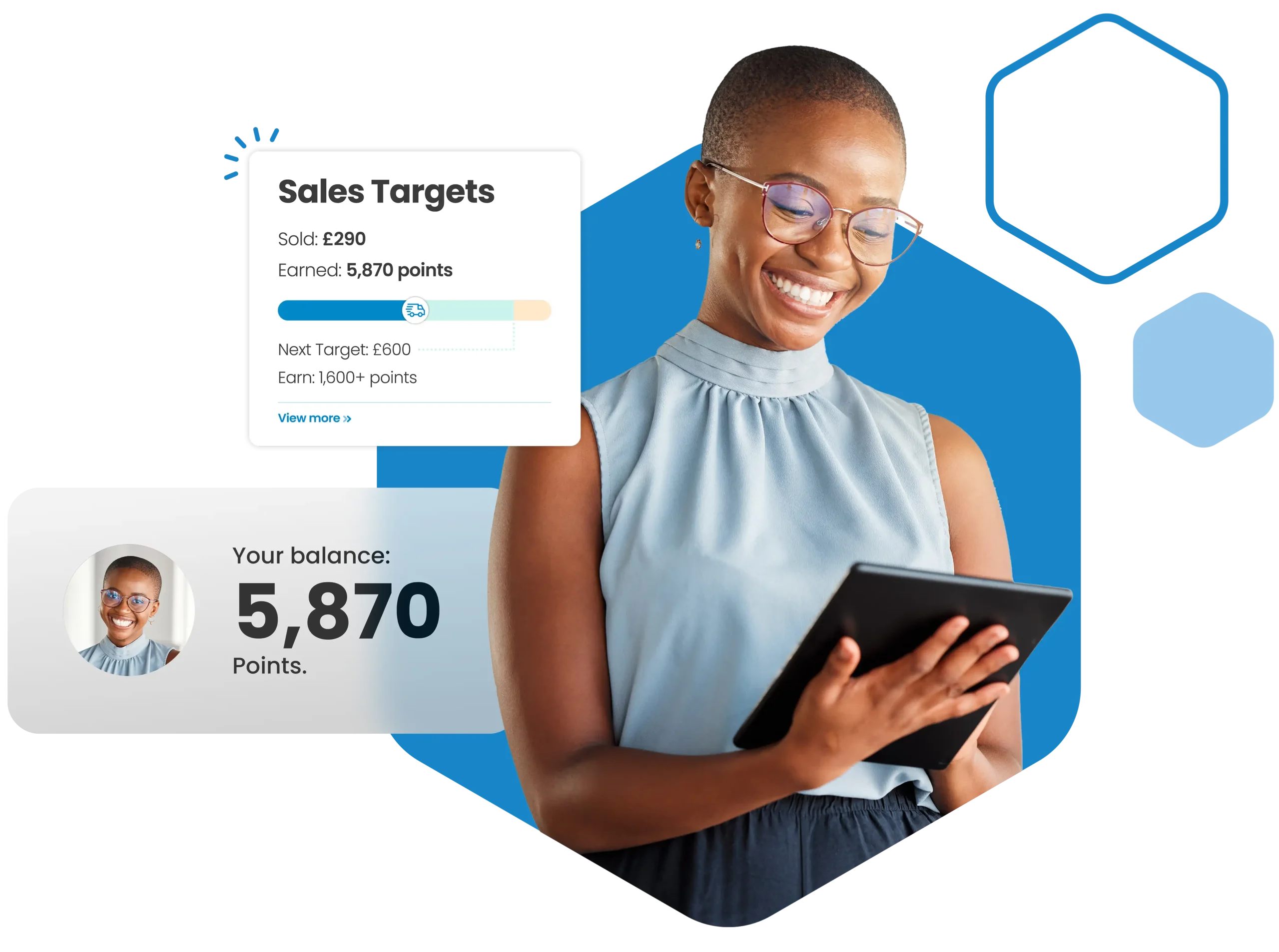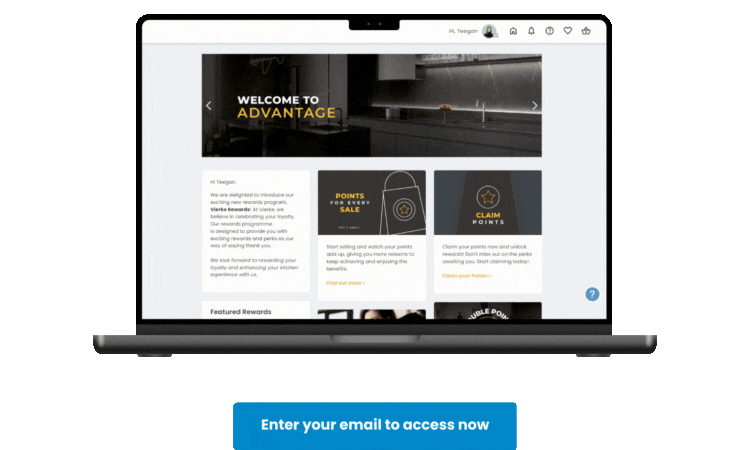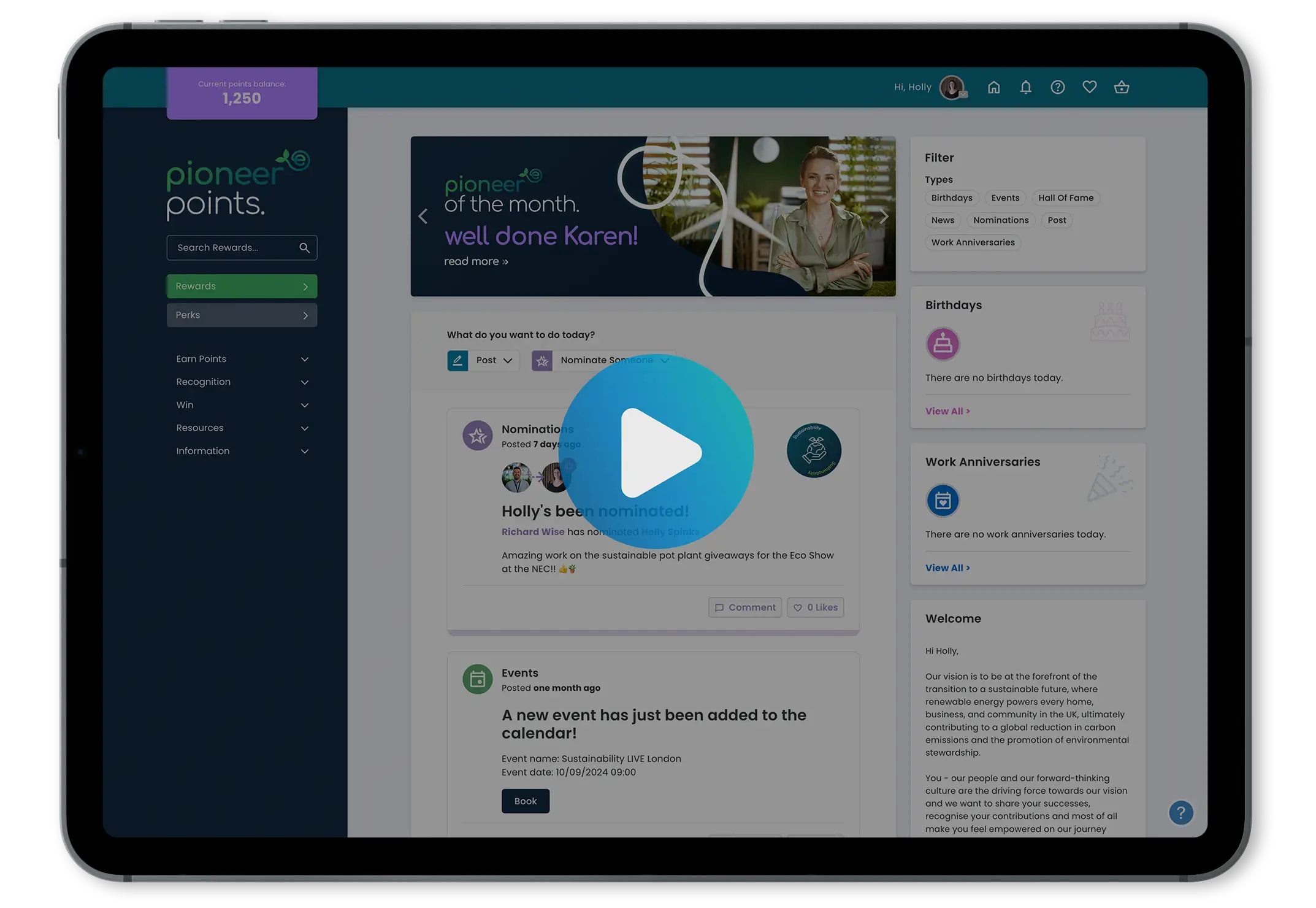


A channel sales model is a game-changing opportunity to grow your business. By partnering up on a channel sales strategy, you can dramatically expand your reach and tap into new income streams and markets, without the need to hire more sales reps. Sounds good, right?
But how do you know if a channel sales model is right for you?
In this guide, we’ll cover channel sales strategies from top to bottom.
You’ll learn how this clever approach works and how to make the most of it. We’ll also show you how to choose the ideal partners and give you practical tips for success.
So without further ado, let’s find out what makes channel sales so appealing.
Skip to:
- Channel sales vs direct sales (what’s the difference?)
- The advantages and disadvantages of channel sales
- Is a channel sales strategy right for your business?
- The different types of channel partner
- So what makes a good channel partner?
- How to implement a channel sales strategy (in 7 steps)
- Measuring success
Channel sales vs direct sales (what’s the difference?)
Choosing the right sales approach can make or break your growth strategy. So, what’s it going to be—channel sales or direct sales? Let’s unpack the differences.
Direct sales is pretty straightforward. It involves selling your products or services directly to customers through your own in-house team. You control everything—from generating leads and building customer relationships to closing deals and providing after-sales support. The upside? You get full visibility and control over every stage of the sales cycle. The downside? Scaling your sales team takes time, money, and resources.
Channel sales, on the other hand, lets you tap into established networks by partnering with distributors, wholesalers, resellers, or affiliates. These partners sell your products for you, earning a commission or margin on each sale. Instead of building every relationship yourself, you leverage your partners’ existing customer bases, expertise, and resources.
Here’s the interesting bit: with channel sales, you share responsibility for the sales process. Your partners handle marketing, distribution, and customer acquisition, freeing you up to focus on product development, strategy, and support. However, this approach means you’ll have less direct control over customer interactions, relying instead on partners who represent your brand.
So, which one should you choose?
It depends on your business goals, resources, and how fast you want to scale. Direct sales offer control and clarity but require significant internal investment. Channel sales accelerate your reach, allowing quicker expansion into new markets, but require robust partner management and clear communication.
Before jumping in, carefully weigh the pros and cons of each approach. Ask yourself: Do you prefer maintaining full control, or does rapid growth through strategic partnerships sound more appealing?
Whichever route you take, understanding these differences is the first step towards choosing the best sales strategy for your company. Ready to dive deeper?

The advantages and disadvantages of a channel sales strategy
Let’s be honest—handing over control of your sales process to someone else can feel a bit like letting your teenager borrow the car. Technically everything should go smoothly, but there’s always a risk they’ll drive it straight into a lamppost—or worse, misrepresent your brand.
That said, partnering with the right people can unlock major benefits.
Channel sales can help you scale without inflating your headcount. It can boost efficiency, open doors to new markets, and speed up your ability to test and tweak your offering. You may even find that customers get better service—especially if your partners are local experts or industry specialists.
So, what’s the catch? Well, you’ve got to give up a bit of control, and managing partner relationships takes time and effort. But with the right structure in place, the rewards can far outweigh the risks.
The advantages of channel sales
- Access to new markets:
Channel partners often have existing relationships in territories or customer segments you haven’t cracked yet. Whether it’s a regional distributor or an industry-specific reseller, these partners can open doors that might otherwise stay firmly shut. Think of it as borrowing someone else’s VIP pass. - Lower sales costs:
Hiring, onboarding and managing a large sales team is expensive—not to mention time-consuming. Channel partners work on a commission or margin basis, meaning you only pay when they deliver results. It’s a leaner, more flexible model that can ease pressure on your payroll. - Scale your business:
Scaling a direct sales team requires headcount, infrastructure, and serious coffee. With channel sales, you can expand your reach far more quickly by partnering with multiple resellers or distributors. You grow faster without having to clone your sales team. - Increase brand awareness:
Well-established partners bring credibility and familiarity in markets where your brand might be a stranger. If they’re already trusted by your target customers, some of that trust rubs off on you—like a brand halo effect. - Shared risk:
Expanding into new markets always carries an element of risk. But with channel sales, you’re not going it alone. Your partners share the burden—financially and operationally. If a new region or product line underperforms, it’s not all on your shoulders.
The disadvantages of channel sales
- Limited control:
When you outsource part of your sales process, you also outsource a bit of your brand experience. You can’t always guarantee how partners will present your product—or how well they’ll stick to your messaging. It’s a bit like sending someone else to give your wedding speech. Fingers crossed they don’t go off script. - Reduced profit:
Channel partners don’t work for free (nor should they). Commissions or wholesale discounts eat into your margins. While the trade-off can be worth it for the reach and scale, it’s important to run the numbers and make sure the sums still add up. - Dependency on partners:
The more successful your partner programme becomes, the more you may start to rely on it. But if one of your top partners suddenly changes strategy, jumps ship to a competitor, or goes bust, your sales pipeline could take a hit. It’s always wise to avoid putting all your eggs in someone else’s basket. - Brand dilution:
The more partners you have, the harder it is to maintain consistency. Too many cooks—each with their own way of selling—can lead to a confusing brand presence in the market. One might position you as premium, another as a bargain bin find. Not ideal. - Conflict of interest:
At the end of the day, your partners are running their own businesses. They may have other products in their portfolio—possibly even competing ones. When push comes to shove, they’ll promote what makes them the most money. It’s business, not betrayal.

Is a channel sales strategy right for your business?
So, channel sales sound pretty tempting—but how do you know if it’s the right fit for your business? Before diving in, it’s worth asking yourself three crucial questions:
1. Firstly, do you have the resources to handle the increased demand that comes with diversifying your sales channels?
In other words—do you have the operational capacity to keep up with the increased demand that can come from working with multiple partners? Channel sales can scale fast. If your supply chain, customer service, or fulfilment can’t keep pace, you might be setting yourself up for trouble rather than triumph. If you’re not quite there yet, it might be wise to get your house in order first.
2. Secondly, do you have an effective, repeatable, and accessible sales process to suit channel partners?
A successful channel sales strategy depends on having a repeatable, well-documented sales process that partners can easily adopt. If your current sales strategy still involves a lot of trial-and-error (and a few crossed fingers), it’s probably not ready for prime time. Your partners need clarity, not chaos.
3. Finally, are you willing to trust potential partners with your brand reputation?
If not, then a channel sales strategy may not be suitable for your organisation.
Your channel partners will be representing your brand, and that requires trust. Are you comfortable sharing your brand reputation with others? Can you let go of a bit of control without breaking into a cold sweat? If you’re not quite there, it might be best to hold off until you’re more confident in your partner selection and oversight processes.
Still interested?
OK, then it’s time to find someone to partner with!

The different types of channel partner
Not all channel partners are created equal. From tech-savvy resellers to old-school wholesalers, the channel partner universe is wide and varied. Each type brings something different to the table—so choosing the right one is a bit like picking teammates for a pub quiz: you want a good mix of knowledge, reliability, and maybe someone who knows obscure 90s pop culture.
- Resellers
These folks buy your product and sell it on, typically at a markup. Simple, classic, and very effective—especially if they already have a loyal customer base. Resellers often work in B2B or tech sectors and may bundle your product with others to create custom solutions. - Affiliate Partners
Affiliates don’t sell your product directly—they promote it online, driving traffic to your site in return for a slice of the action. Perfect if you want to boost digital visibility and get in front of new audiences without a huge ad spend. Think influencers, bloggers, or niche review sites.
- Distributors
These are the logistics experts. They don’t necessarily deal with end users but help move your product along the supply chain to wholesalers or retailers. They’re the ones who make sure your product doesn’t get stuck in a warehouse somewhere in the Midlands. - Wholesalers
Wholesalers buy in bulk and sell to retailers. If your goal is to get your product into as many stores as possible, they’re your best mate. They’re also great at smoothing out inventory hiccups and keeping shelves stocked. - Value Added Reseller (VAR)
VARs don’t just resell—they upgrade. They might bundle your software with hardware, offer custom integrations, or throw in installation and support. If your product needs a bit of tailoring for different customer needs, these partners can add serious value.
- Independent Retailers
These are the plucky shop owners and small businesses flying solo. They might not have the buying power of a national chain, but they’re agile, community-focused, and often have fiercely loyal customers. Great for niche or local market reach. - Dealers
Dealers focus on specific products—think car dealerships or electronics. They’re usually specialists with deep knowledge of their sector and a strong ability to sell the features and benefits of what they’re offering. - Agents
Agents don’t own your product or stock it—they simply facilitate the sale. Think of them as the matchmakers of the sales world. Ideal if you’re looking to test a new market or make connections without diving in head-first. - Consultants
They might not sell your product, but they’re the behind-the-scenes strategists who can help you build an efficient channel programme. They’ll introduce you to potential partners, refine your processes, and help make sure everything runs smoothly.

So what makes a good channel partner?
When it comes to building a channel sales strategy that actually works, who you partner with matters—a lot.
It’s tempting to go big: sign up as many partners as possible, throw your product into their hands, and hope for the best. But just like dating, quantity doesn’t guarantee quality. A long list of mediocre partners won’t do your brand any favours.
A good channel partner is more than just someone who can shift units. They’re an extension of your team. They understand your product, share your values, and are invested in a long-term relationship—not a quick win.
Look for partners who:
- Have a solid presence in your target market.
- Already sell complementary (not competing) products.
- Are motivated to grow and collaborate.
- Can follow a structured sales process—and aren’t afraid of a bit of paperwork.
Mutual benefit is key. If the relationship only works one way, it won’t last. So instead of casting the net wide, be selective. Focus on building a handful of high-performing partnerships that are profitable, loyal, and aligned with your business goals.
In short: don’t just find someone who can sell your product. Find someone who wants to and will do it well.
What qualities make for a successful partnership?
Once you’ve got an idea of what your ideal partner might look like, it’s time to dig into the nitty-gritty. Not every partnership will be a perfect match, and that’s OK. The goal is to find partners who bring out the best in your product, not just those who say yes.
Here are a few must-have qualities to keep in mind:
Do they complement your service?
It’s important to ensure that your partner’s product or service complements your own offering.
A great channel partner should make your offering stronger—not compete with it. Their product or service should fill gaps in your current line-up or help customers get more value from what you already provide. Think peanut butter and jam—not peanut butter and pickles. If your partner can enhance the customer experience, drive additional outcomes, or help users achieve more with less hassle, you’re on the right track.
Remember, it’s not just about selling products. These partnerships should create value for customers. This can take many forms, from product innovation to market access and improved customer experience.
By providing complementary services, these partners should add value to the overall customer experience and help drive growth for both parties involved.
Do you have market alignment?
You don’t want to be selling snow boots in the Sahara.
A good partner will have access to customers who actually need and want your product. Make sure there’s a strong overlap in your ideal customer profiles, geographic reach, company sizes, or use cases. Shared audiences make for smoother messaging and better sales conversations.
Do you share goals?
It’s hard to win together if you’re playing different games.
A successful partnership requires shared objectives—whether that’s growing market share, entering new regions, or improving customer satisfaction. When you’re aligned on the why, it becomes much easier to collaborate on the how.
How much effort will it take to train them?
Some partners are plug-and-play, they understand your product straight away and are ready to go. Others may need a bit more hand-holding.
Ask yourself: what’s the learning curve, and is the long-term payoff worth the initial investment? Not every partner needs to be a product guru, but they should be confident enough to deliver a good customer experience without daily support from your team.
In the end, a successful partnership is all about balance, shared vision, complementary skills, mutual benefit, and a good dose of trust. Get that mix right, and you’ve got the makings of a channel dream team.

How to implement a channel sales strategy (in 7 steps)
So, you’ve weighed the pros and cons, sized up your dream partner, and decided a channel sales strategy is the way forward. Brilliant move.
Now comes the exciting bit—bringing it all to life.
Building a channel programme isn’t just about sending out contracts and hoping for the best. It’s about creating a structured, supportive, and scalable system that attracts the right partners, sets them up for success, and keeps them motivated to keep selling.
From recruitment and onboarding to ongoing support, your strategy should make partners feel like they’re part of something bigger—not just a bolt-on to your business.
And yes, that means equipping them with everything they need: product training, clear messaging, marketing materials, sales tools, and maybe even the odd GIF-packed email to keep things lively. The better equipped your partners are, the more consistent your customer experience will be—and the more confident they’ll feel flying your flag.
So, ready to build a winning channel programme?
Let’s walk through it, step by step…
Step 1: Engage potential partners with really useful content
Use your ideal partner persona to craft relevant, useful content that focuses on their needs.
Let’s say you want to work with eCommerce platforms.
You could create an in-depth guide on how to optimise your eCommerce store for higher conversion rates or host a webinar on the latest trends and strategies for eCommerce success.
Ensure that your content speaks directly to the pain points and goals of your ideal partner. By showing that you understand their needs and can provide valuable solutions, you’ll be more likely to attract and engage potential partners.
Step 2: Figure out their needs
Potential partners won’t be inclined to collaborate with you unless they perceive a mutual benefit.
Therefore, it’s crucial to identify how you can help them, whether by enabling them to offer additional services, expanding their customer base, or increasing the value of their product or service.
Step 3: Choose a structure
Once you have established a few partnerships, you need to decide on the best structure for your collaborative efforts.
There are three primary models for channel sales partnerships, each with its unique advantages. These include:
- Selling together
- Selling through your partner, or
- Having your partner sell for you.
Depending on your goals and specific circumstances, you may choose to employ one or more of these strategies in tandem with your direct sales model.
Step 4: Peak their interest
Since you lack direct control over partners, it can be a challenge to engage them.
To encourage partners to sell, it is crucial to provide them with excellent resources that they can use to confidently sell your product.
Top tip: We’d recommend you invest more in developing content for your channel partners than for your direct sales representatives. Partners will be less familiar with your product after all.
Ensure that your partners are equipped with clear and comprehensive product specifications, testimonials, customer examples, competitive comparisons, email templates, call scripts, meeting agendas, and objection-handling cheat sheets.
These resources will help partners feel confident, thus boosting their motivation to sell.
Step 5: Keep up the communication
To ensure your partners remain invested, make an effort to maintain regular communication.
Remember, you’re probably not their only partner.
So keep them up-to-date with the latest news, product updates, and strategic announcements. Without regular contact, issues can fester and go unnoticed.
Communications can take various forms such as sending periodic emails, using an online portal, creating a Slack space, setting up a Facebook group, hosting partners in your head office, running webinars, roadshows or events.
Whatever the method, make sure to stay in touch to forge strong bonds and build brand advocacy.
Top tip: If in doubt, it’s always better to over-communicate!
Step 6: Reward desired behaviours
Offering additional rewards over and above commission payments can foster even more compelling partnerships.
By implementing a tiered system of channel partner incentives or tactical SPIFFs, you can incentivise desired behaviours and create brand superfans.
You could offer enhanced marketing support, exclusive event tickets, strategic consulting, meetings with your executives, points-mean-prizes rewards, exclusive beta feature access, premium directory listings, end of year travel incentives, and more.
These rewards will motivate partners to work harder, improve their product knowledge and build mindshare.
Step 7: Get organised with a Channel Partner platform
Staying on top of partner data can be a daunting task when scaling a multi-channel business.
Thankfully, specialised tools exist to streamline your channel data.
This not only helps you track revenue generated by your sales partners but also facilitates incentive payouts, e-learning and communication. Thereby ensuring sustainable growth of your channel sales programme.
Measuring success
So, you’ve built your channel sales strategy, recruited the right partners, and set the wheels in motion. Great stuff!
But now comes the million-pound question: how do you know if it’s actually working?
In channel sales, success isn’t just about racking up orders (although that’s a lovely bonus). It’s about creating sustainable growth, building strong partner relationships, and ensuring that your brand reputation shines through every interaction.
To get a true picture of how your programme is performing, you’ll need to track a range of metrics—not just the obvious ones. Think of it like checking the health of a business: it’s not enough to take its temperature; you need the full diagnostic.
Here are 20 ways you can measure progress, spot opportunities, and fine-tune your channel strategy:
- Recruitment quota attainment: Gauge the success of your recruitment efforts
- Total number of partners: Assess the effectiveness of your outreach and relationship-building efforts
- Average time to onboard a new partner: Understand whether your recruitment and onboarding processes need to be re-evaluated or streamlined
- Number of partner deals registered: Get an idea of the volume of deals your channel partners are able to make
- Average cost of onboarding a new partner: Determine how cost-efficient your channel partnership-building process is
- Percentage of partners recruited by channel: Determine where partnerships are coming from (such as networking groups, proactive outreach, or referrals)
- Percentage of partners using provided collateral: See whether the materials you’re providing partners are accessible and effective
- Percentage of partners attending events and training: Reveal if partners are enthusiastic about your training methods
- Average partner satisfaction score: Understand if you need to tweak your training to better suit partner needs
- Average value of partner deals: Shows you how effective your partners are in selling your product or service
- Percentage of accepted partner deals: Determine whether your channel partners’ sales efforts are reaching expected levels
- Percentage of closed partner deals: Shows the number of deals that were successfully closed by your channel partners
- Average sales cycle length: Determine the effectiveness of your partner training and identify top performers
- Cross-sell and upsell rates for partners vs direct sales: See how effective your channel partners are at generating incremental revenue
- Percentage of partners registering leads: Assess channel partner performance in generating leads
- Percentage of partners attempting certification: Reveal whether your partners find your certifications useful and unimposing
- Percentage of partners that have completed certification: See if your certifications are accessible enough
- CAC for each partner sale vs direct sale: Spot the difference in profitability between your channel partner strategy when compared to direct sales
- Retention rates for partner sales vs direct sales: Know whether the relationships developed during your partner sales have staying power
- Partner attrition rate: Measure the number of partnerships that fail over a given period, to identify problem areas
Top tip: Be sure to set KPIs from the outset and have reporting to hand for at least a few of these (preferably all of them!)
Grow your business with channel sales
So there you have it! If you’re looking to take your business to the next level, opting for a channel sales strategy can be an absolute game-changer.
Sure, building a solid channel sales programme requires an upfront investment – not only of money but also your time and effort – but the benefits are immense.
With channel sales, you not only get access to new customer segments, but you also establish strategic partnerships that can drive sustainable growth.
Think about it – by working with channel partners, you gain access to their customer base and unlock new revenue streams. What’s more, channel partners can offer unique insights into your market and help you refine your go-to-market strategy.
By leveraging these partnerships effectively, you can take your business to new heights.
So what are you waiting for?









